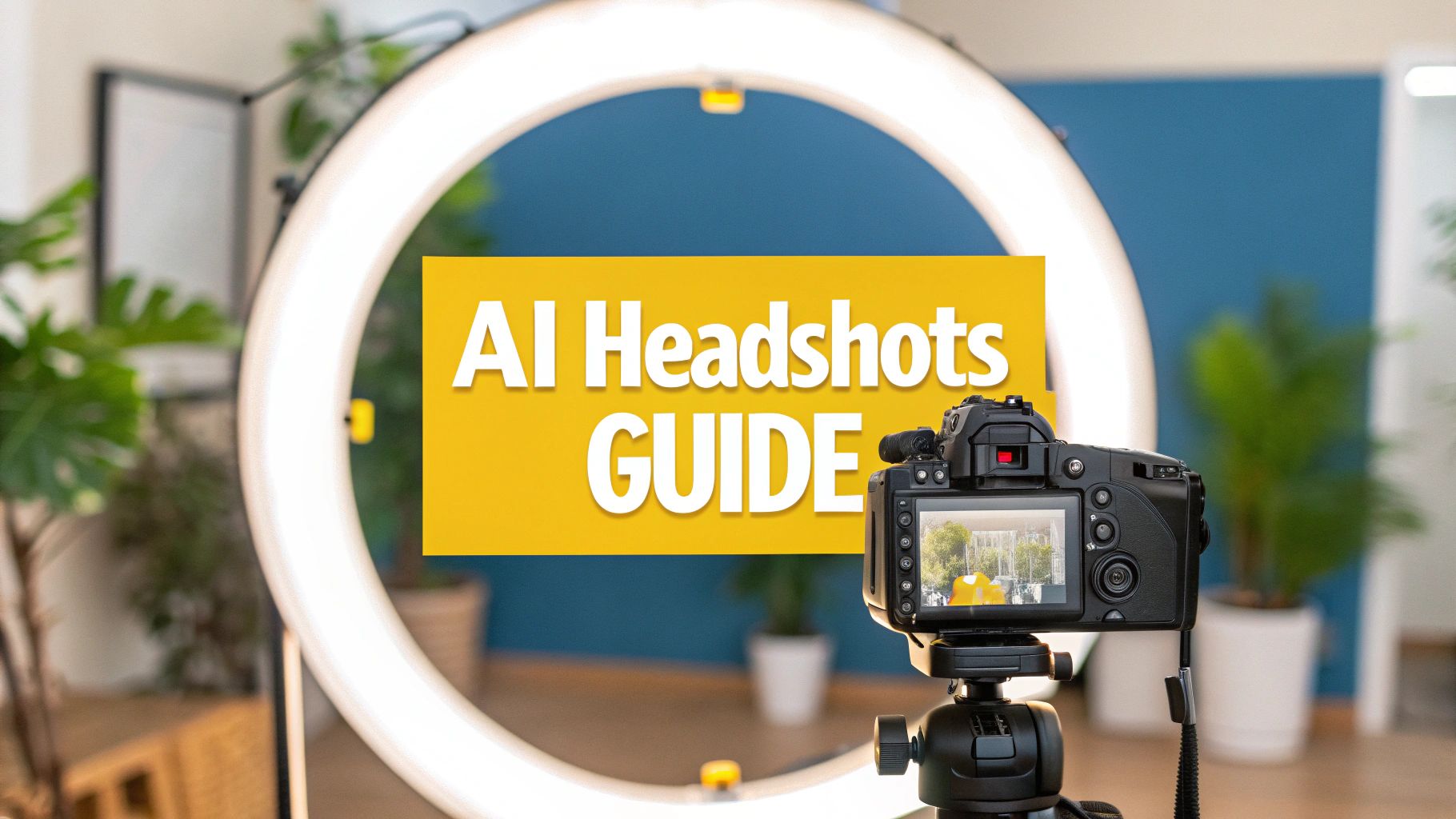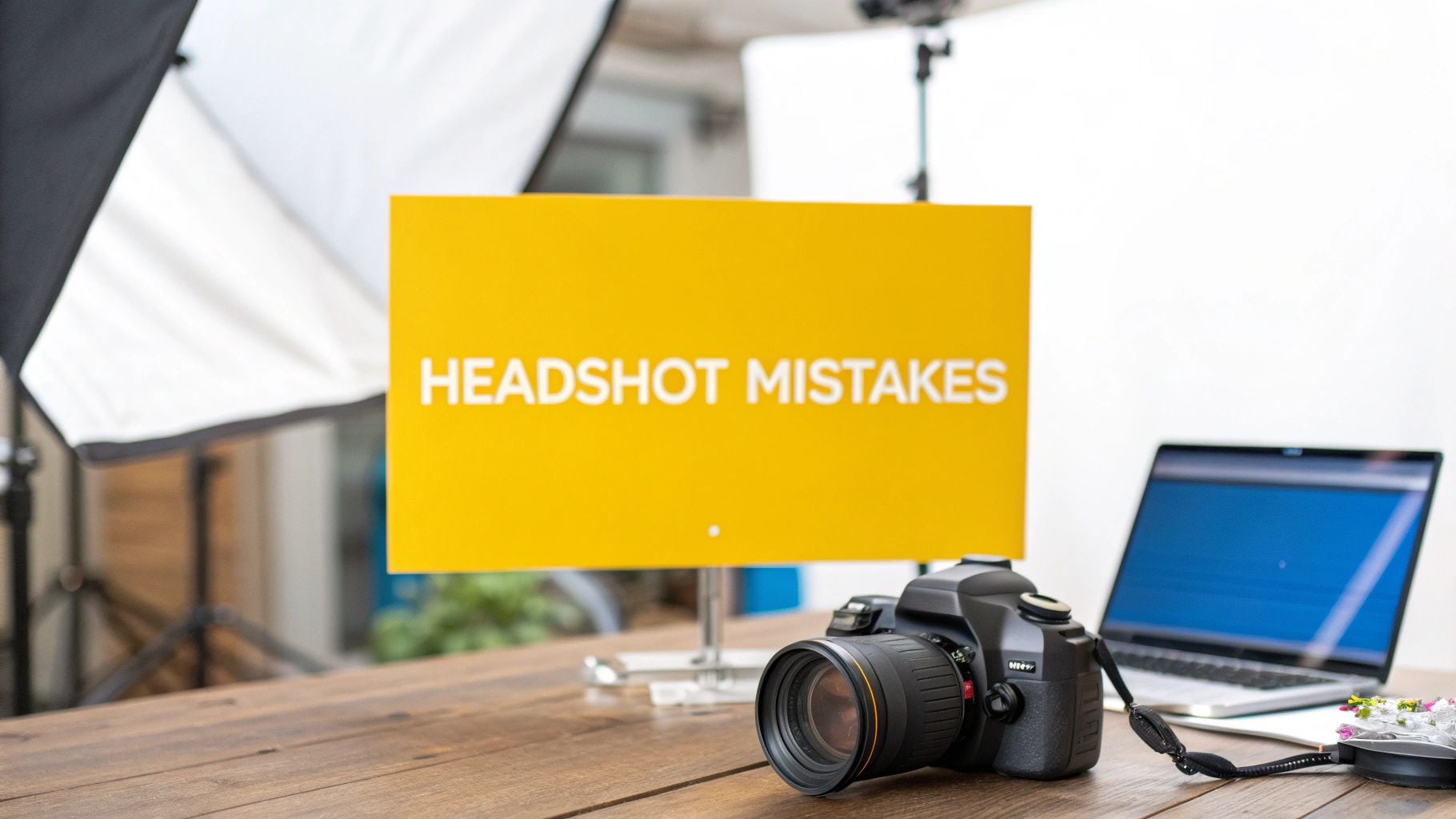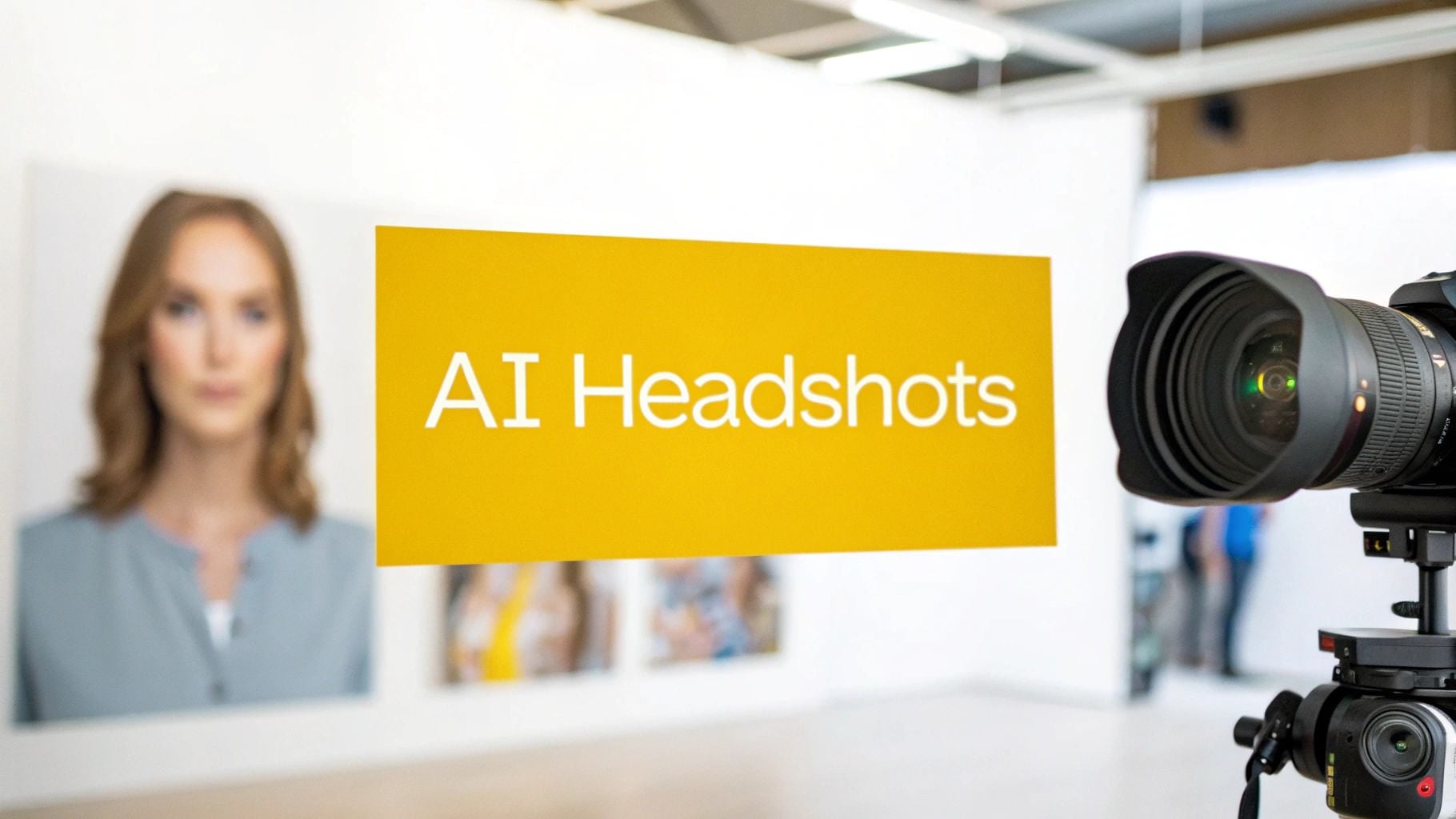To get impressive AI-generated headshots, the quality of your source photos is the most important factor. Think of it as "quality in, quality out." If you provide the AI with blurry, poorly lit images, it cannot learn your features well enough to create a polished, professional result. The key is to provide high-resolution photos with good lighting, a clear view of your face, and a variety of expressions.
Your Quick Checklist for AI Headshot Photos
Let's dive into what makes a good source photo. This is your quick-reference guide to the core requirements, broken down into simple, actionable steps. Getting this part right is the most important step in the entire process. Beyond just headshots, understanding the power of personalized images and AI portraits can show you how this technology is changing our digital identities.
For a fast overview, the infographic below highlights the three most critical elements for success.

As you can see, it boils down to three fundamentals: high resolution, even lighting, and a simple background. If you can achieve these three things, you are well on your way to getting a fantastic AI-generated headshot.
Why Your Input Photos Are So Important
The saying "quality in, quality out" has never been more true than with AI headshots. The quality of the photos you upload directly determines the quality of the headshots you receive. It's that simple.
Think of the AI as a skilled portrait artist who needs to study you from multiple angles. If you provide clear, detailed, and well-lit photos, you give the artist an excellent reference to work from. The result is a final portrait that looks sharp, professional, and, most importantly, looks just like you.
Conversely, if your photos are blurry, grainy, or cast in heavy shadow, the AI has to guess what you look like. It struggles to fill in the missing details, which often leads to inaccuracies or strange results in the final images. For a deeper look at how this technology works, check out our complete guide to AI headshot generators.
Taking a few minutes to understand the photo requirements for AI headshots is the best thing you can do to guarantee great results. By choosing the right photos from the start, you set yourself up for new pictures you'll be proud to use on LinkedIn, your resume, or your company website.
Essential Photo Quality and Technical Specs
Getting the technical aspects of your photos right is non-negotiable for great AI headshots. These core principles don't just apply here; they're fundamental for getting quality results from all sorts of AI image tools for visual content creation.

Think of this as your pre-upload checklist. The AI needs enough data to work with, so your images must be high-resolution—aim for 1024x1024 pixels or larger. Stick to standard file types like JPEG or PNG. You’ll want to avoid screenshots or heavily filtered photos from social media, as they are often compressed and lose the detail the AI needs.
These clear photo requirements are quickly becoming the industry standard for professionals. To learn more about this trend, you can discover more insights about AI headshot trends.
Ultimately, your goal is to give the AI the best possible raw material. When you feed it clear, uncompressed images, you drastically increase the odds of getting a polished, professional headshot in return.
Best Practices for Lighting, Background, and Face
To get the best possible results from an AI headshot generator, you need to provide the AI with clear, high-quality information. The AI learns your face from the photos you upload, so those source images are the foundation of your final headshots.

Here is a simple checklist to follow for each photo:
- Facial Visibility: Your face should be the star of the show. Your photos should be all about you—no sunglasses, hats, or other people in the shot. Anything that hides your face or distracts from it will confuse the AI.
- Good Lighting: Use soft, even lighting that illuminates your whole face. Natural light from a window works best. Avoid harsh overhead lights or strong side lighting that creates deep shadows.
- Simple Background: Choose a neutral, uncluttered background. A plain wall is perfect. Busy backgrounds can distract the AI from focusing on your facial features.
- Variety is Key: Don't just submit a dozen photos of you smiling straight at the camera. Mix it up! Provide photos from different angles—looking straight on, slightly to the left, slightly to the right. Include a range of expressions, from a neutral look to a soft smile. This variety helps the AI build a complete, 3D model of your face.
The bottom line is simple: the more diverse and clear your input photos are, the better the AI can perform. This approach ensures the final headshots aren't just high-quality, but also genuinely look like you across a range of professional styles.
How to Choose Your Outfits and Expressions
The photos you upload are the raw material for your new headshots, so your clothing and expressions matter. Getting these details right is a huge part of meeting the photo requirements for AI headshots, and it starts with keeping your outfit choices simple and professional.
Solid, classic tops are always a safe choice. Think button-down shirts, simple blouses, or a clean crewneck sweater. Busy patterns and large logos can sometimes confuse the AI, leading to strange artifacts in the final images. A simple outfit allows the AI to focus entirely on your face.
When taking your photos, be sure to capture a few different expressions. A warm, professional smile is great, but also include some with a more neutral or confident look. This variety gives the AI more to work with, resulting in a wider range of headshots you can use for anything from a corporate bio to your LinkedIn profile. For more tips on putting your best foot forward, check out this guide on how to look good for men.
When you have your source photos ready, you can create your own professional pictures with the AI Headshot solution from Headyshot.
How to Prepare and Upload Your Photo Collection
Alright, you've selected your best photos. Now for the final, crucial step: preparing them for upload. Taking a few moments here is what separates good AI headshots from great ones that look like you.

The ideal number is between 10 and 20 photos. This gives the AI plenty of different angles and expressions to learn your features from, without overwhelming it with too much similar data.
Before you upload, do one last quick review. Think of it as a final quality check to ensure you've covered all the requirements.
Final Upload Checklist
- Image Count: Do you have at least 10-20 high-quality photos?
- Resolution & Format: Are they all sharp, clear, and in JPEG or PNG format? Avoid blurry or pixelated shots.
- Face Visibility: Is your face clearly visible in every picture? No sunglasses, heavy shadows, or other obstructions.
- Lighting & Background: Are the photos well-lit with simple, uncluttered backgrounds?
- Variety: Does your collection include different angles and expressions?
Running through this checklist confirms you've met all the essential photo requirements for AI headshots and will give the AI the best possible material to work with. When you prepare your collection this carefully, you are setting the stage for fantastic results.
Frequently Asked Questions
Still have questions about the photos you need for your AI headshots? Let's tackle some of the most common ones to ensure you're set up for success.
Can I use old photos?
You can use older pictures if they still genuinely look like you and meet all the quality standards we've discussed. However, for the best results, we recommend using photos taken within the last year. This gives the AI the most accurate and up-to-date information to learn your current features, which translates into headshots that look authentic.
Do I really need a professional camera?
No, you don't. That’s one of the best parts about this process. You can get fantastic results using selfies from any modern smartphone. The key is to pay attention to your environment. Stand near a window to get good natural light, and make sure you have a simple, uncluttered background. This helps the AI focus entirely on you.
Hopefully, these answers help you feel confident about choosing the right photos. It all comes down to a simple idea: the better the pictures you provide, the better the headshots you'll get back.
Ready to see what AI can do with your pictures? Explore our AI Headshots solution at Headyshot and get professional photos you’ll be proud to share.





